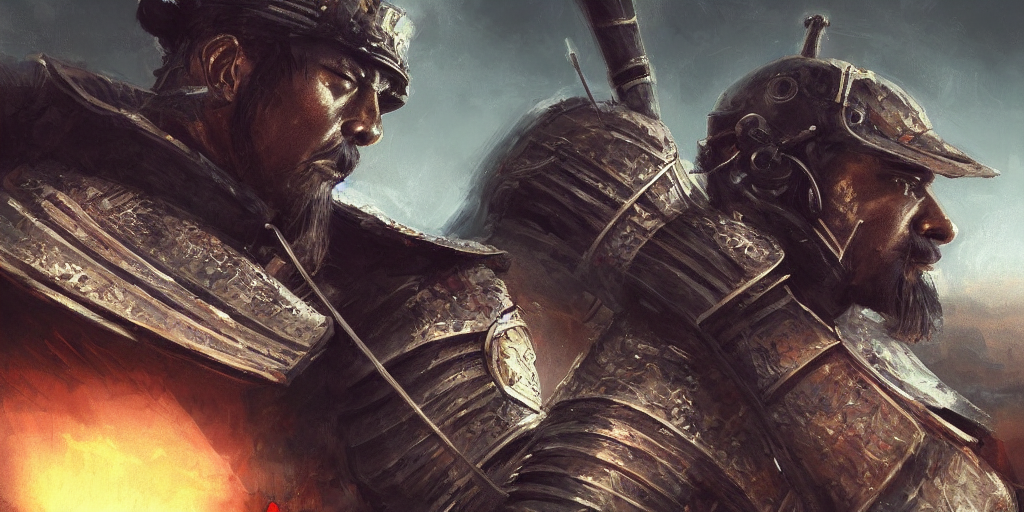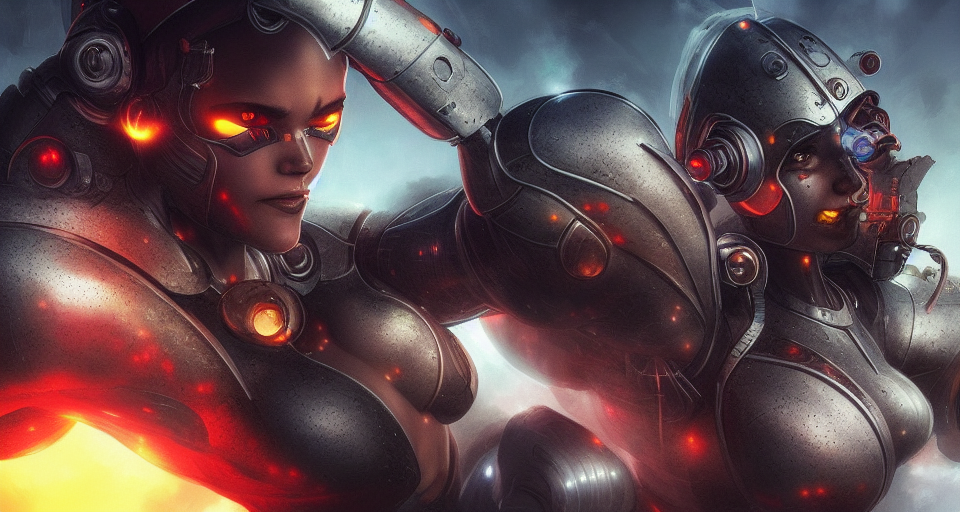Art has always been an expression of creativity, imagination, and emotion. With the advancements in technology, we now have a new avenue for artistic expression through the use of deep learning in image-to-image (Img2Img) art generation. This article explores the role of deep learning in Img2Img art generation, how it works, and its impact on the art world.
Table of Contents
Introduction
The use of deep learning in Img2Img art generation has become a popular trend in recent years, allowing artists to generate new and unique artworks based on existing images. Deep learning models can be trained to generate a wide range of artistic styles, from realistic to abstract, using a technique called neural style transfer. This technique uses a combination of convolutional neural networks (CNNs) and image processing algorithms to transform one image into another while preserving the content of the original image.
The Science of Img2Img Art Generation
Img2Img art generation involves the use of deep learning algorithms to generate new images based on existing ones. The process typically involves two steps: the content extraction and the style transfer. In the first step, a deep learning model is trained to extract the content of the original image. In the second step, another deep learning model is trained to apply the style of the desired image to the content extracted in the first step. The final output is a new image that combines the content of the original image with the style of the desired image.
How does Img2Img Art Generation work?


There are multiple avenues for creating AI Generated Art. Most of which are easily accessible on a web browser. Dream Studio, Replicate, Hugging Face, and Night Cafe are web based programs able to generate art using AI. Simply head on over to their website, log in with an account, and you’re all set. These websites offer Stable Diffusion as the neural system for generating art.
Stable Diffusion (SD) is a text-to-image model capable of creating stunning art within seconds. It is a breakthrough in speed and quality for AI Art Generators. It can run on consumer GPUs which makes it an excellent choice for the public. Stable Diffusion also has an img2img function. Simply upload a base photo, then enter in your prompt, and see your generated artwork.
Stable Diffusion has the goal of providing billions of people an avenue for creating impossible art using artificial intelligence. As of writing, the AI art community is continuously growing. A more in depth guide about Stable Diffusion is available here on PhotogpediA. It discusses the history, community, and tips regarding Stable Diffusion. Check out this link and learn more about it!
Applications of Deep Learning in Img2Img Art Generation
Deep learning has opened up new avenues for artistic expression by allowing artists to create new and unique artworks using existing images as a base. The applications of deep learning in Img2Img art generation are vast and varied, including:
1. Artistic Style Transfer
Artistic style transfer involves applying the style of one image to the content of another. This technique has been used to create a wide range of artworks, including paintings, illustrations, and even photographs.
2. Image Manipulation
Deep learning algorithms can be used to manipulate images in various ways, such as changing the color palette, adding or removing elements, or transforming the image into a different art style.
3. Image Restoration
Deep learning algorithms can also be used to restore damaged or degraded images, such as old photographs or paintings.
Impact of Deep Learning on the Art World
The use of deep learning in Img2Img art generation has had a significant impact on the art world, both in terms of the creation and consumption of art. Some of the ways deep learning has impacted the art world include:
1. New Forms of Art
Deep learning has opened up new forms of art that were previously impossible to create. This includes the ability to generate completely new images that combine the content of one image with the style of another, as well as the ability to manipulate and restore existing images.
2. Democratization of Art
The use of deep learning in art creation has also democratized the art world by allowing more people to create and share their artwork. This has led to the emergence of new art communities online, where artists can share their work and collaborate with others.
3. New Opportunities for Artists
The use of deep learning in art creation has also created new opportunities for artists. Many artists are now using deep learning algorithms to create unique artworks, and some are even incorporating these techniques into their traditional art practices.
Tips for Img2Img Generation
The possibilities are limitless with AI Art Generators. Your base photo can completely look magical in just mere seconds. There are also scenarios where you can just add effects for your photos. This section highlights the best practices for img2img generation.
Understand Prompts
Firstly, prompts are the backbone for AI Art Generation. Whether text-to-image or img2img, prompts have the greatest importance. Work with online prompt builders and create highly detailed prompts. This helps the AI really narrow down the art it creates. From lighting, art style, and subject, a detailed prompt consistently gives the best results.
Also, after having a detailed prompt, you have the option of adding or removing details. You can start off by removing some lighting detailers. This lets the AI create similar images to your initial prompt but differentiated lighting. This brings us to our next point – iteration.
Iteration
Second, iteration provides step by step changes on your AI generated art. It is the repetition of a process. This process however, requires understanding of how seeds work. Seeds keep the outputs highly likely to that of each other. After keeping your seed value constant, you can vary your variables one at a time.
Either add or remove prompt details and checkout the variations in the result. You can also adjust the cfg scale and let the AI work out the details of the image. Improve the process of iteration by increasing the number of Steps. Lastly, tinker with the Image Strength percentage and create heavy or light edits on your photo.
Conclusion
The use of deep learning in Img2Img art generation has revolutionized the way we create and consume art. With the ability to generate new and unique artworks, manipulate and restore existing images, and even generate creative writing, the applications of deep learning in art are endless. As technology continues to advance, it is likely that we will see even more innovations in the field of deep learning and art.
While some may argue that the use of deep learning in art creation takes away from the creativity and skill of the artist, others argue that it is simply a new tool for artists to use and explore. Ultimately, the use of deep learning in art creation is a reflection of the intersection between technology and art, and it will be interesting to see how this relationship develops in the years to come.
FAQs
1. What is deep learning?
Deep learning is a type of artificial intelligence that uses algorithms inspired by the structure and function of the human brain to learn from data.
2. How does Img2Img art generation work?
Img2Img art generation involves the use of deep learning algorithms to generate new images based on existing ones by extracting the content of the original image and transferring the style of the desired image.
3. What are some applications of deep learning in art?
Deep learning can be used for artistic style transfer, image manipulation, image restoration, and even creative writing.
4. How has deep learning impacted the art world?
Deep learning has opened up new forms of art, democratized the art world, and created new opportunities for artists.
5. Is deep learning taking away from the creativity of artists?
While some may argue that it takes away from the creativity and skill of the artist, others argue that it is simply a new tool for artists to use and explore. The use of deep learning in art creation is a reflection of the intersection between technology and art, and it will be interesting to see how this relationship develops in the years to come.
Afterword
We hope that you find this article helpful. Thank you for reading and you’re always free to leave a comment. If you find this article interesting, consider checking out one of our recently published posts. A few of them showcase advancements in technology such as AI Art Generators. On the other hand, if you’re looking towards Photography, we also offer great articles for your inspiration. We also have multiple articles that talk about the various printing mediums for wall art. May these articles give you inspiration for your next print!
Find them here:
AI Art Generators : Img2Img
Stable Diffusion Tips and Tricks
Stable Diffusion : AI Art Generator Spotlight
The Printing Mediums of Wall Art
The Top Food Photography Trends to Try Now
We enjoy reading your comments and insights with our posts! Should you have any questions or concerns, feel free to leave them below! -Mark

